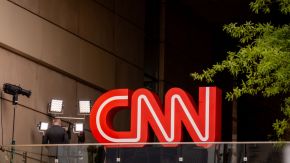A SpaceX Crew Dragon spacecraft successfully docked with the International Space Station (ISS) on Sunday, just one day after launching from the Kennedy Space Center.
This mission is important because it carried a NASA astronaut and a Russian cosmonaut to the space station. They will join two other astronauts already aboard for a five-month mission, helping with research and experiments in space.
SpaceX Crew Dragon Connects with ISS
The meeting between the Crew Dragon and the ISS happened 28 hours after the launch, even though there were some recent problems with SpaceX's Falcon 9 rocket.
According to SpaceX, a malfunction occurred in the Falcon 9's upper stage after the Crew Dragon was released to fly by itself. This caused the rocket's second stage to misfire and re-enter the Earth's atmosphere over the Pacific Ocean.
Although it landed safely, it was outside its intended landing area. SpaceX engineers are looking into what went wrong to make sure it doesn't happen again in future launches.
SpaceX shared on its X (formerly Twitter) account that the second stage had "experienced an off-nominal deorbit burn" and assured everyone that engineers were working hard to fix the problem.
According to CBS News, this is the second time in three months that the Falcon 9's upper stage has had an issue, raising concerns about upcoming flights. Two important launches are scheduled for October, which involve sending probes for NASA and the European Space Agency to study Jupiter and an asteroid.
Despite the rocket problems, the Crew Dragon mission went as planned. The spacecraft docked at the ISS at 5:30 p.m. EDT while flying 265 miles above southern Africa. Once the connection between the two spacecraft was confirmed to be airtight, the hatch was opened about 90 minutes later, allowing the crew to enter the space station.
The new arrivals, NASA astronaut Nick Hague and Russian cosmonaut Alexander Gorbunov, were welcomed by ISS commander Barry "Butch" Wilmore and pilot Sunita Williams. Wilmore and Williams have been aboard the ISS for some time and were joined by Aleksey Ovchinin, Ivan Vagner, and NASA astronaut Don Pettit, who traveled to the space station earlier in a Soyuz spacecraft.
This mission marks a crew change as Hague, Gorbunov, Wilmore, and Williams will take over duties from Crew-8 astronauts Matthew Dominick, Mike Barratt, Jeanette Epps, and cosmonaut Alexander Grebenkin. Crew-8 is expected to return to Earth on October 7, ending their 217-day mission aboard the space station.
Also Read: Olive Garden Bets on Fan Favorites, Brings Back Beloved Menu to Boost Sales
Starliner Setbacks Lead to Extended Mission
Wilmore and Williams initially arrived at the ISS in June aboard a Boeing Starliner spacecraft for a week-long test flight. However, during the mission, engineers discovered helium leaks and malfunctioning thrusters, which led to the crew having to stay longer.
NASA later decided that the Starliner problems were not fully understood, which led to the decision to keep Wilmore and Williams from returning home on that spacecraft.
Because of this, Wilmore and Williams will stay on the ISS for the entire Crew-9 mission, which is expected to last about five months. Their return to Earth is planned for February, after they finish their work on the space station.
NASA also adjusted SpaceX's flight schedule, removing two astronauts, Stephanie Wilson and Zena Cardman, from the original Crew-9 mission to make room for Wilmore and Williams, according to CNN.
Both Williams and Wilmore, who have been to space before, said they are okay with staying in space longer than they originally planned. Williams said that being in microgravity makes her feel happy, showing that she is excited about her extended mission.
The current crew aboard the ISS includes NASA astronaut Don Pettit, along with Russian cosmonauts Aleksey Ovchinin and Ivan Vagner. They arrived earlier this month in a Russian Soyuz spacecraft. This continues the long cooperation between NASA and Russia in exploring space.
Related Article: SpaceX Aims to Launch Five Uncrewed Starship Missions to Mars Within Two Years, Elon Musk Reveals
















